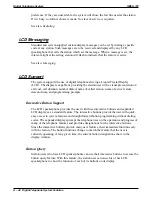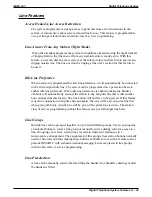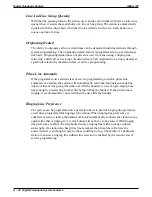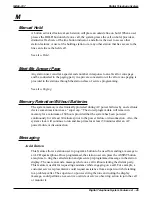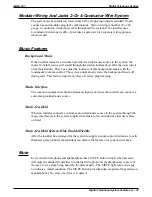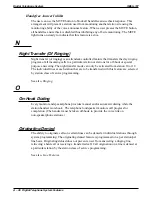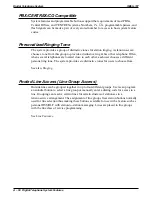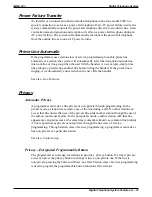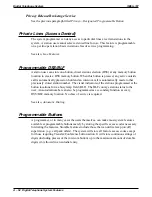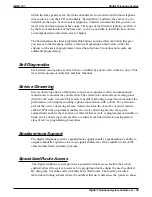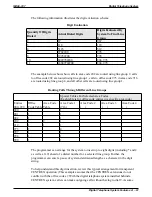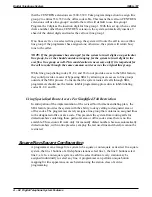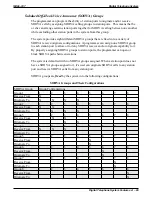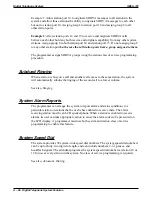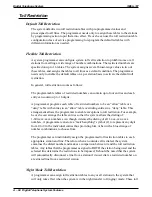
Response Messaging
This feature allows a user to reply in a non-verbal manner to a voice announce or
tone-signaled intercom call or to a subdued off-hook voice announce call if the intercom
caller is using an LCD speakerphone. A station user can press a programmable button in
response to an intercom call and send a message to be shown on the display of the calling
station. Response messages are pre-programmed by the attendant and later stored by
station users at programmable buttons on their individual stations as need dictates.
See also, Messaging.
Remote Programming And Administration
Both remote class of service programming and the transmission of SMDR data for
printing are available through serial data ports. The system supports X-on X-off terminal
control codes as well as a DTR signal for handshaking. The system data communications
operates per the popular XMODEM protocol. The database can be uploaded or
downloaded, error free, from or to a remote computer that is running software that
supports the XMODEM protocol. The two serial data ports allow VDT programming
(either local or remote) to be conducted through one port at the same time that the other
port is being used to send SMDR data for printing. VDT programming of the system is
menu driven.
See also, Class Of Service.
Ringer Volume Control
DigiTech and Impact telephones have a ringer volume control that telephone users can
operate to adjust the loudness of the ringer at his or her station.
Ringing
Auxiliary Ringer Interface
The auxiliary ringer interface provides “dry-contact” relay closures which track the
ringing pattern whenever the system sends ringing to a programmable destination.
Programmers can program relay control to be activated when the system sends ringing to
station port 17 or to the paging port.
When programmed for station port 17 ringing, an installer often uses an external device
to provide loud ringing. When programmed for paging port ringing, an installer often
installs an external paging amplifier to sound the rings. The system supplies ringing tones
to the paging port along with the relay closures. It can send the ringing tones to the input
IMI66–107
Digital Telephone System
Digital Telephone System Features A – 55
Summary of Contents for Air Impact DSU
Page 2: ...Printed in U S A GCA47 157 ...
Page 30: ......
Page 112: ......
Page 192: ...Digital Telephone System IMI66 107 3 80 System Programming ...
Page 283: ......
Page 284: ......
Page 285: ......
Page 286: ......
Page 287: ......
Page 288: ......
Page 289: ......
Page 290: ......
Page 291: ......
Page 292: ......
Page 293: ......
Page 294: ......
Page 295: ......
Page 296: ......
Page 297: ......
Page 298: ......
Page 299: ......
Page 300: ......
Page 301: ......
Page 302: ......
Page 303: ......
Page 304: ......
Page 305: ......
Page 306: ......
Page 307: ......
Page 308: ......
Page 309: ......
Page 310: ......
Page 311: ......
Page 312: ......
Page 313: ......
Page 314: ......
Page 315: ......
Page 316: ......
Page 317: ......
Page 318: ......
Page 319: ......
Page 320: ......
Page 321: ......
Page 322: ......
Page 323: ......
Page 324: ......
Page 325: ......
Page 326: ......
Page 327: ......
Page 328: ......
Page 329: ......
Page 330: ......
Page 331: ......
Page 332: ......
Page 333: ......
Page 334: ......
Page 335: ......
Page 336: ......
Page 337: ......
Page 338: ......
Page 339: ......
Page 340: ......
Page 431: ......
Page 436: ......
Page 437: ......
Page 438: ......


